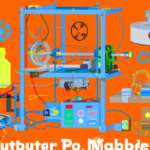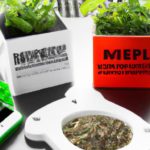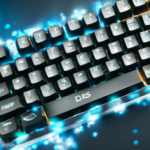
Introduction
It seems like nowadays everyone is talking about 3D printing. And why not? 3D printing is an exciting new technology that has the potential to change the world. But, with all the hype surrounding 3D printers, it’s easy to get overwhelmed and not know where to start. This is where this guide comes in. In this article, we’ll provide you with a beginner’s guide to 3D printing that will help you take your first steps to creating amazing 3D prints. From explaining the basics of 3D printing technology to post-processing your prints, our aim is to equip you with everything you need to know to go from idea to reality with ease. So, if you’re ready to dive into the wonderful world of 3D printing, let’s get started!
Understanding 3D Printing Technology
To fully grasp the potential of 3D printing, it’s essential to understand how the technology works. Essentially, 3D printing involves creating a physical object from a digital model by using additive processes. This means that the object is created layer by layer from the bottom up.
The three main components of 3D printing technology are the printer, the material, and the software. 3D printers can come in a range of sizes and types, from desktop printers to industrial-sized models. There are also different types of materials that can be used in the printing process, ranging from plastics and resins to metals and even food.
To create a 3D object, you need to start with a digital 3D model. This can be created from scratch using 3D modeling software or by using a 3D scanner to scan an existing object. Once you have a digital model, you can load it into the 3D printing software to prepare it for printing.
Overall, understanding the basics of 3D printing technology is crucial for getting started with your own printing projects. By having a strong grasp on how the technology works, you can make informed decisions about which printer and materials to use, and how to optimize your printing process for the best results.
Preparing Your 3D Print
Before you can start printing, you need to prepare your 3D model for the printing process. This involves a few essential steps to ensure that your design is optimized for printing and your final print comes out as accurately as possible.
First and foremost, it’s important to check your 3D model for any errors or issues that could affect the printing process. This includes things like holes, inverted faces or overlapping geometry. Most 3D modeling software will include tools for checking and fixing these issues.
Next, it’s important to set the right size and orientation for your print. This can affect the strength, stability and overall quality of your print. Many 3D printing software tools will suggest the best orientation for your print to reduce the likelihood of structural issues.
Another important step in preparing your 3D print is to consider support structures. Some models may require additional support structures to help prevent sagging or drooping during printing. These can usually be automatically generated in the 3D printing software and removed after printing.
Finally, it’s important to ensure your model is optimized for the printing material you will be using. Different materials have different properties, such as melting points and cooling rates, which can affect the print quality.
By taking the time to properly prepare your 3D model for printing, you can greatly improve the success rate of your prints and produce high-quality output.
Setting Up Your 3D Printer
Once your 3D model is prepared, it’s time to get your printer set up for the printing process. This involves several important steps, including calibrating your printer, loading the print material, and adjusting the print settings.
One of the most crucial steps in setting up your 3D printer is calibrating it for your specific print. This involves leveling the print bed to make sure it’s even, fine-tuning the extruder settings, and adjusting the print speed settings to ensure the best possible print quality.
Another important step is loading the print material into the printer. Depending on the type of printer and material you are using, this may involve feeding rolls of filament or resin into the machine, or loading cartridges of pre-made material.
Once your printer is calibrated and the material is loaded, it’s time to adjust the print settings to match your specific model. This includes things like temperature settings, layer height, infill density, and print speed. Most 3D printing software will provide recommended settings based on the material you are using, but it’s important to experiment with these settings to find the best combination for your specific print.
Overall, setting up your 3D printer for printing is an essential part of the process to ensure the best possible print quality. By taking the time to carefully calibrate your machine and adjust the settings, you can greatly increase the success rate of your prints and produce high-quality output.
Printing Your Model
Once your printer is set up and your model is loaded into the software, it’s time to start printing. While the printer does the hard work, there are a few things you can do to ensure your print runs smoothly and produces quality results.
One of the most important things to monitor during printing is the first few layers of the print. These will set the foundation for the rest of the print and can be a good indicator of any potential issues. Be sure to keep an eye on the printer during this time to ensure everything is going as planned.
It’s also important to avoid disturbances during printing, as this can cause errors or misalignments. For example, try to avoid bumping the printer or moving it during the printing process.
Another important factor to monitor during printing is the quality of the material being used. If you notice any issues with the quality or consistency of the material, it’s important to stop the print and address the issue before proceeding.
Once the printing is complete, it’s time to remove the finished model from the print bed. Depending on the specific printer and material used, this may require some additional steps, such as removing support structures or trimming excess material.
Overall, by carefully monitoring the printing process and taking appropriate action when necessary, you can greatly increase the success rate of your prints and produce high-quality output.
Post-Processing Your 3D Print
Once you have removed your 3D print from the printer, it’s time to post-process it. This involves several steps to clean and finish the printed model, ensuring that it looks and functions as intended.
One of the first steps in post-processing your 3D print is to remove any support structures or rafts that were used during printing. This can be done using pliers or sanders, depending on the specific material and structure of the print.
After removing support structures, you will need to clean up any excess material or rough edges using sandpaper or other finishing tools. This will help smooth out the surface of the object and help to remove any blemishes or imperfections.
Depending on the material and intended use of the object, additional post-processing steps may be required, such as painting, gluing, or polishing. Some materials, such as metals or ceramics, may require additional curing or firing processes to fully harden and set the printed object.
Overall, post-processing of your 3D print is an essential step to achieving a high-quality final product. Whether you are creating a functional prototype or a decorative object, taking the time to carefully clean and finish your print will ensure the best possible result.
Troubleshooting Issues with 3D Printing
While 3D printing can be a rewarding and exciting process, it’s not uncommon to run into issues or errors during printing. Here are some common problems that may arise during printing and how to troubleshoot them:
1. Layer Shifting: Layers that shift or skew during printing can result in a misaligned or unusable print. Check to make sure the printer is properly calibrated, the print bed is level, and there are no obstructions or debris interfering with the print.
2. Warping: This is when the edges of a print begin to curl up or warp away from the print bed. This can be caused by temperature issues or insufficient adhesion between the print and the bed. Try adjusting the temperature settings or applying an adhesive spray to the bed.
3. Stringing or Oozing: Sometimes, the printer may leave strings or blobs of filament between sections of the print, causing a messy or uneven appearance. Adjusting the retraction settings or slowing down the print speed can often help to reduce this issue.
4. Under-Extrusion: This occurs when the printer doesn’t extrude enough material for a given layer or section, resulting in gaps or weakened areas. Check to make sure the extruder and nozzle are clean and clear, and try adjusting the temperature or speed settings.
By understanding and troubleshooting common issues that can arise during printing, you can quickly and effectively fix any problems and achieve a high-quality final product.
Conclusion
In conclusion, 3D printing is an exciting and rapidly growing field with the potential to revolutionize how we create and produce objects. By following the steps outlined in this guide, you can easily go from an idea to a finished 3D print, regardless of your level of experience.
Remember to take the time to properly prepare your model for printing, set up your printer for success, and troubleshoot any issues that may arise during the printing process. With patience, attention to detail, and a willingness to experiment and learn, you can produce high-quality 3D prints that meet your goals and exceed your expectations.
As 3D printing technology continues to evolve and become more accessible, there has never been a better time to delve into this exciting world. So, what are you waiting for? Start exploring the possibilities of 3D printing today!







1 thought on “From Idea to Reality: A Beginner’s Guide to 3D Printing”